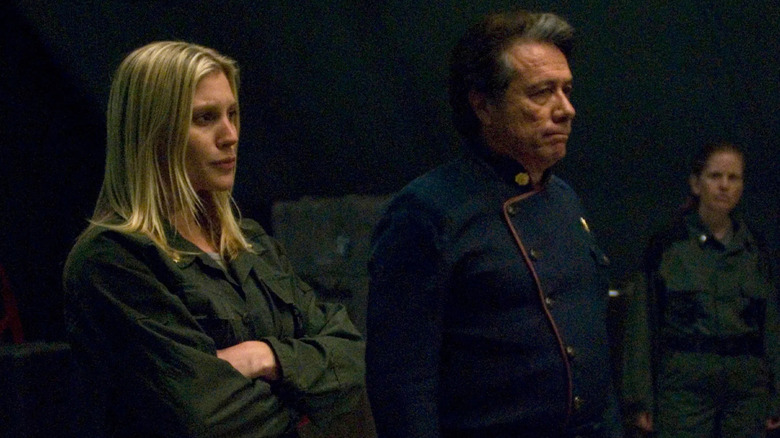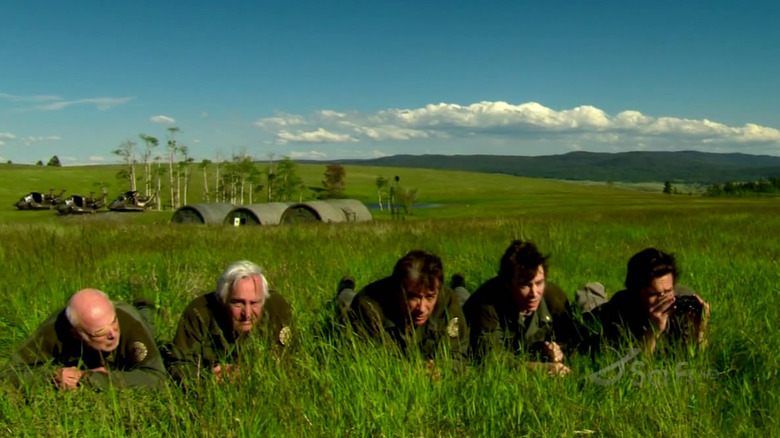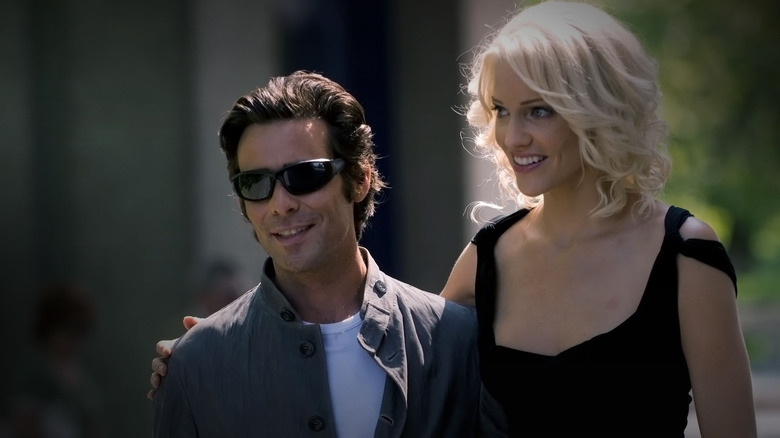Battlestar Galactica's Finale Could Have Been A Four-Hour Epic
The reimagined "Battlestar Galactica" is the crown jewel of the SYFY network and one of the best space operas of the 21st century. Well, until its ending, that is, which remains rather divisive. The three-part, 2+ hour finale, "Daybreak," aired 13 years ago from March 13 to 20, 2009, and divided viewers.
I fall somewhere in the middle; I think the finale is excellent until the characters reach Earth. The first half, when Galactica's crew assaults the Cylon stronghold to rescue hybrid child Hera (Iliana Gomez-Martinez), is the sort of thrill ride "BSG" always excelled at. The second half isn't terrible, but it does have the feeling of writers who opened one too many mystery boxes with no clue of how to tie the answers together. Reflecting this hodgepodge of ideas that needed sorting, the finale originally clocked in a whole hour longer than the broadcast version.
Streamlining the structure
Speaking to Collider, series co-creator Ronald D. Moore explained how "Daybreak" ended in the form it did and what differences there were between his original draft and the final one. As Moore tells it, the editing involved not just trimming things down, but restructuring events to create greater coherence.
"Daybreak" part 1 features a series of flashbacks, chronicling how the main characters got to the point where we meet them in the pilot: how William Adama (Edward James Olmos) accepted the captaincy of "Galactica," how eventual President Laura Roslin (Mary McDonnell) got involved in politics, how Lee (Jamie Bamber) and Kara (Katee Sackhoff) fell in love, and how Gaius Baltar (James Callis) fell under the sway of Number Six (Tricia Helfer). According to Moore, the structuring of these flashbacks was one of the fixes he made during revision.
"The structure in the script was much less linear... I was doing flashbacks and current stuff and mixing up the flashbacks. You would see the end Laura's story before you saw the beginning of it and then you'd come back to the present. Then you'd see another piece of Adama's story... When you read it...it was like, 'Wow!' It was really a huge thing to wrap your mind around... When you laid it out like that in film it was really hard to follow. As much as I wanted it to work, people around me were going, 'I'm not sure it works. Maybe you should make it linear.' Then I started feeling like maybe you're right. So it just became a more linear piece in that all the flashbacks lined up chronologically instead of doing them all the flashbacks out of order."
Watching the uncut finale
Can curious fans ever check out the original, 4-hour version of "Daybreak"? Probably not. According to Moore, an "uncut" version of "Daybreak" exists, but most likely on a misplaced DVD somewhere at Moore's own house or Universal's archives, where it would take a lot of sleuthing and a minor miracle to find. Moore himself hasn't watched it since production wrapped in 2009. However, he reassured fans they weren't missing that much.
For one, the "uncut" version wasn't anywhere close to complete. While it was far enough along that it didn't contain any storyboard placeholders for un-shot footage, there was unfinished green screen and most of the CGI-heavy shots were simple pre-viz. He also stressed a lesson all filmmakers learn when it comes to editing:
"A lot of times longer is not better. I'm used to watching original directors cuts and early cuts of episodes and movies and they're always long but that doesn't mean that they're better. They just have more stuff and some of that stuff just needs to go because it's not working or the joke is not playing. A lot of the editing of these things is really to its betterment."
I have to agree with Moore. From how he explained his revision process, the 4-hour "Daybreak" is likely just a more bloated and poorly paced version of the cut which saw air. If I were to ever want to watch the earlier cut, it would be less as a fan and more to see how it compares to the broadcast version and gain a better understanding of the creative process that guided its streamlining. After all, that creative process gave us a series that, warts and all, ranks in the upmost halls of science-fiction television.


